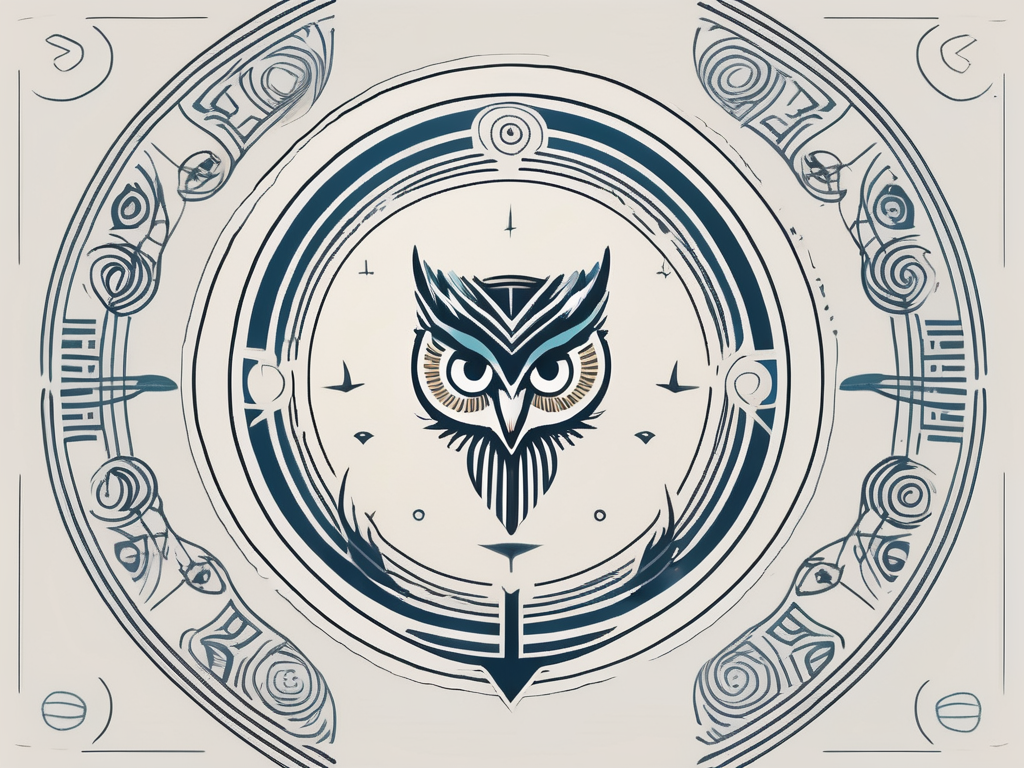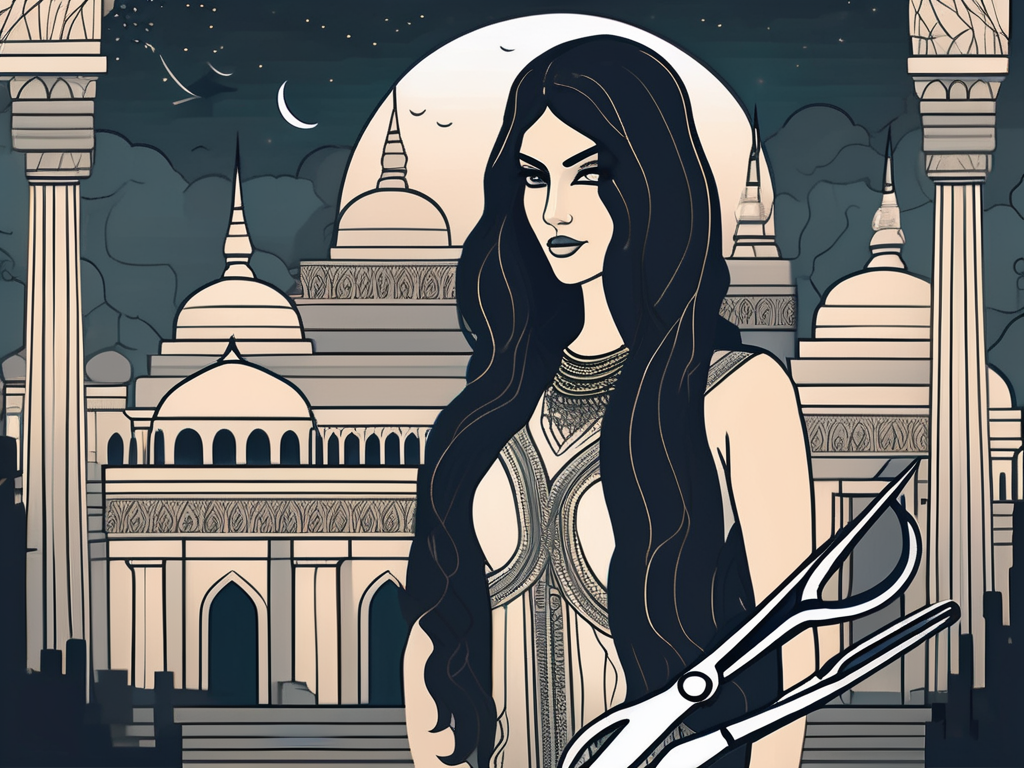Ancient Egyptian mythology is a treasure trove of fascinating stories and characters. One such captivating duo is Kek and Kauket, a deity couple who symbolize darkness and chaos. In this article, we will dive into the rich mythology surrounding these mysterious figures and explore their significance in Egyptian culture. Get ready for a journey through the realms of duality, symbolism, worship, and legacy!
Understanding the Concept of Duality in Egyptian Mythology
Egyptian mythology often revolves around the concept of duality, where contrasting elements coexist and complement each other. Kek and Kauket embody this concept as they personify darkness and chaos, two fundamental forces in the universe. Darkness, contrary to popular belief, is not always associated with evil. In Egyptian mythology, it is seen as a necessary component for creation and renewal.
The Role of Kek and Kauket in Symbolizing Darkness
Kek, the god of chaos, is often represented with the head of a frog, while Kauket, the goddess of darkness, is depicted as a snake or a serpent. The frog was a symbol of fertility and rebirth in ancient Egypt, while the snake represented the protective aspects of the divine feminine. Together, Kek and Kauket form a powerful symbol of the primordial darkness that preceded the creation of the world.
When we delve deeper into the symbolism of Kek and Kauket, we find that their representation as a frog and a snake goes beyond their physical attributes. The frog, with its ability to transition between land and water, represents the liminal space between chaos and order. It embodies the transformative power of darkness, where new beginnings emerge from the depths of uncertainty. On the other hand, the snake, with its ability to shed its skin and renew itself, symbolizes the cyclical nature of darkness. It reminds us that even in the darkest of times, there is always the potential for growth and regeneration.
The Connection Between Kek, Kauket, and the Primordial Ogdoad
Kek and Kauket are closely associated with the primordial Ogdoad, a group of gods and goddesses who symbolize chaos and the formless void. The Ogdoad existed before creation itself, and it was believed that their union brought forth the first mound of earth, giving rise to the world as we know it. Kek and Kauket’s role within the Ogdoad highlights their importance in the cosmic order of ancient Egypt.
Within the context of the Ogdoad, Kek and Kauket represent the chaotic forces that set the stage for creation. Their presence in the mythological narrative emphasizes the significance of darkness in the overall balance of the universe. Just as light cannot exist without darkness, creation cannot occur without chaos. Kek and Kauket serve as a reminder that even in the most harmonious of worlds, there is always an underlying current of disorder that fuels the cycle of creation and destruction.
Furthermore, the association between Kek, Kauket, and the Ogdoad extends beyond their role in the creation myth. In Egyptian cosmology, the Ogdoad was believed to govern the ebb and flow of the Nile River, which was essential for the agricultural prosperity of the land. The annual flooding of the Nile brought fertile soil and nourishment to the crops, ensuring the survival and abundance of the Egyptian civilization. Thus, Kek and Kauket’s connection to the Ogdoad not only highlights their cosmic significance but also their practical importance in the everyday lives of the ancient Egyptians.
The Symbolism and Iconography of Kek and Kauket
The depictions of Kek and Kauket in ancient Egyptian art and iconography offer further insights into their symbolism and significance. Kek, with his frog head, represents the unpredictable nature of chaos. Frogs were also associated with floods, which were both destructive and renewing forces in the agricultural cycle. Kauket, on the other hand, stands as the embodiment of darkness and the mysteries it holds.
The Depiction of Kek: The God of Chaos
As the god of chaos, Kek is often depicted as a frog-headed figure, either in a human form or as a full-fledged frog. His representation emphasizes the ever-changing nature of chaos and the unpredictable twists and turns it brings into our lives. Kek’s association with frogs also extends to his ability to bring about transformation and renewal, as the inundation of the Nile River brought fertility to the land.
Ancient Egyptians believed that chaos was an essential part of the natural order, as it allowed for growth and change. Kek’s frog head symbolizes his connection to the primordial waters of creation, which were believed to be chaotic and formless before the world took shape. The frog’s ability to live in both water and on land further emphasizes Kek’s role as a liminal deity, existing between different realms and embodying the transitional nature of chaos.
Furthermore, Kek’s association with floods highlights the destructive power of chaos. In ancient Egypt, floods were both feared and revered, as they could bring devastation to crops and settlements, but also replenish the land with fertile silt. Kek’s presence in the floodwaters symbolizes the dual nature of chaos, capable of both destruction and renewal.
The Representation of Kauket: The Goddess of Darkness
Kauket, the goddess of darkness, is usually depicted as a snake or a serpent. The snake’s connection to darkness and the underworld symbolizes the hidden knowledge and mysteries that lie beyond the realm of light. As a protective goddess, Kauket offers guidance and protection to those who dare to venture into the unknown, seeking wisdom and enlightenment.
In ancient Egyptian mythology, darkness was not associated with evil or negativity, but rather with the unseen and the unknown. Kauket’s serpent form represents her ability to navigate through the shadows and access the hidden realms of the universe. Just as snakes shed their skin, Kauket embodies the transformative power of darkness, allowing individuals to shed their old selves and emerge with new insights and understanding.
Kauket’s role as a protective deity is also reflected in her association with the night sky. In ancient Egypt, the night was seen as a time of vulnerability, when the forces of chaos and disorder could potentially threaten the order of the world. Kauket, with her serpent form, was believed to guard and protect the sun god Ra as he journeyed through the underworld during the night, ensuring his safe return and the continuation of cosmic order.
Furthermore, Kauket’s connection to darkness extends to the realm of fertility and creation. In ancient Egyptian cosmology, darkness was seen as the primordial state from which all life emerged. Kauket’s presence in the darkness represents the potential for new beginnings and the fertile ground from which new life can spring forth.
The Worship and Cult of Kek and Kauket
Throughout ancient Egypt, the worship of Kek and Kauket was an integral part of religious practices and rituals. Their cults had dedicated temples and shrines where people would come to pay homage and seek their favor. The worship of Kek and Kauket often involved ceremonies and rituals performed by priests, who acted as intermediaries between the mortal world and the divine realm.
The Temples and Shrines Dedicated to Kek and Kauket
Many temples and shrines were dedicated to the worship of Kek and Kauket. These sacred spaces were adorned with intricately carved reliefs and statues depicting the divine couple. The sanctuaries provided a place for devotees to offer prayers, make offerings, and seek divine blessings. The presence of Kek and Kauket in these holy sites served as a reminder of the importance of darkness and chaos in the cycle of creation and renewal.
The Rituals and Practices Associated with Kek and Kauket
Rituals associated with the worship of Kek and Kauket often involved the recitation of hymns, the offering of food and drink, and the performance of sacred dances. These rituals were believed to invoke the power of darkness and chaos and bring balance and harmony to the world. The priests who led these ceremonies played a vital role in maintaining the connection between humans and the divine realm.
The Influence of Kek and Kauket in Ancient Egyptian Society
The impact of Kek and Kauket extended beyond the religious sphere and permeated into various aspects of ancient Egyptian society. Their symbolism and significance influenced the cosmology, culture, and beliefs of the ancient Egyptians, leaving a lasting legacy that continues to fascinate scholars and enthusiasts to this day.
The Role of Kek and Kauket in Ancient Egyptian Cosmology
Kek and Kauket’s role in ancient Egyptian cosmology was crucial in understanding the creation and maintenance of the world. Their existence before everything else highlights the importance of chaos and darkness as foundational elements. The balance between light and darkness, order and chaos, was seen as essential for the harmony and continuity of the cosmos.
The Impact of Kek and Kauket on Ancient Egyptian Culture and Beliefs
The presence of Kek and Kauket in the mythology and religious practices of ancient Egypt shaped the culture and beliefs of the society. The appreciation for darkness, chaos, and the ever-changing nature of life permeated into various aspects of Egyptian art, architecture, and literature. The legacy of Kek and Kauket can be seen in the symbolism and themes found in ancient Egyptian artifacts and writings.
The Legacy of Kek and Kauket in Modern Times
Despite the passage of millennia, the legacy of Kek and Kauket continues to resonate in modern times. Their presence can be found not only in academic discussions but also in contemporary mythology and popular culture.
The Interpretation of Kek and Kauket in Modern Mythology and Pop Culture
In modern mythology and pop culture, Kek and Kauket are sometimes interpreted as symbols of internet memes and online subcultures. While this interpretation may seem far removed from their original meaning, it showcases the adaptability and evolution of ancient myths in the ever-changing landscape of human creativity.
The Continued Influence of Kek and Kauket in Contemporary Egyptian Society
In contemporary Egyptian society, Kek and Kauket possess a cultural significance that extends beyond their ancient origins. They are often invoked as a symbol of national identity, representing the enduring spirit of the Egyptian people and their ability to overcome challenges and embrace the unknown.
So, the next time you encounter the names Kek and Kauket, remember the captivating mythology behind these ancient Egyptian figures. From symbolizing darkness and chaos to leaving an indelible mark on society, Kek and Kauket remind us of the power of mythology to shape and inspire generations.












